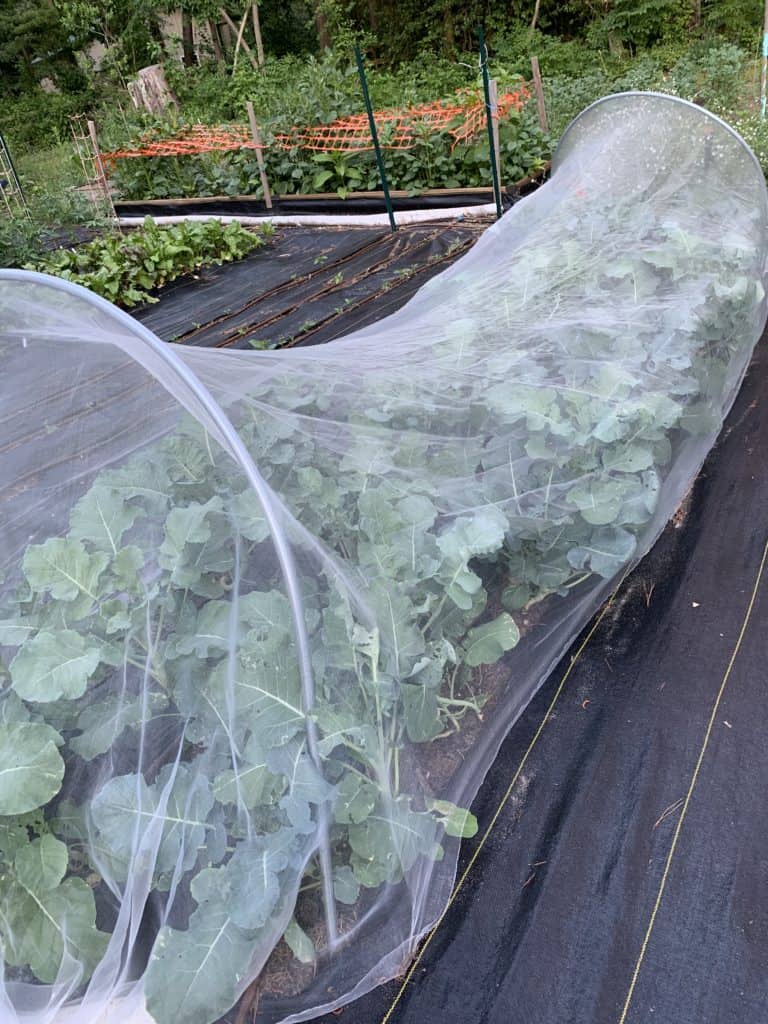Gardening for Health

Protect Your Cole Crops From Pests
If you planted cool weather cole crops early this spring, now’s the time you want to watch for pests. The cole crops, also known as cruciferous vegetables, belong to the Brassica family. Since botanists classify most plants according to the structure of their flower, crucifer refers to the cross-shaped symmetrical yellow petals that occur when the plant bolts (produces seed). Brassicas, also called the cabbage family, include: cabbage, kale, collards, broccoli, Brussels sprouts, cauliflower, radishes, kohlrabi, turnips, rutabagas, arugula and Asian greens.
Brassicas need fertile soil with plenty of organic matter and a good supply of available nitrogen. One of the best ways to achieve this is to add chopped leaves, leaf mold or compost to the soil in the fall. Also add lime at the rate of 1 pound per 20 square feet and mix in. A good nitrogen source is dehydrated alfalfa at the rate of one quart for 25 square feet.
Cutworms enjoy eating brassicas and can fell young transplants. To find a cutworm, wiggle your finger around the soil to find the fat off-white pest and squish it or feed it to your chickens. You can make a collar out of plastic or paper cups with the bottoms cut out and pushed down about an inch around each plant for protection.
When your kale is looking beautiful and you have visions of gorgeous broccoli, check your plants for holes in the leaves. That’s usually an indication of the cabbage worms or cabbage loopers. If they go undetected they will devastate your Brassicas. They always hide under the leaves and usually occur together in the garden. Cabbage worms are medium green, one-inch long caterpillars with subtle yellow stripes along their sides. The adults are the cabbage white butterflies with three black dots on their wings. They flit around the garden and lay their eggs on the back of the leaves. Cabbage loopers are also green and arch their backs as they move. The adult is a gray moth that flies at night. The caterpillars are hard to see because of their green color. Also watch out for the armyworm, a brown striped caterpillar that turns into a cream-colored moth. Squish all of them.
Planting hyssop, rosemary, mint, wormwood, thyme and sage can all help to repel these pests. For immediate control use Bt (Bacillus thuringiensis) or neem oil soap. Protect your Brassicas and they will reward you with good nutritious food that can protect your health.
